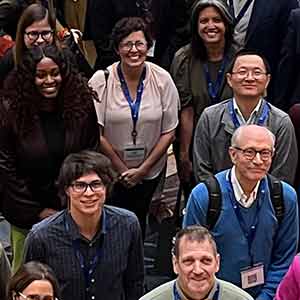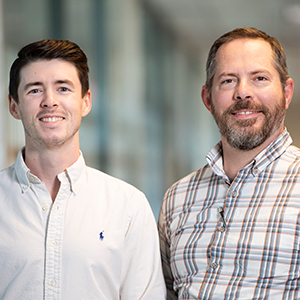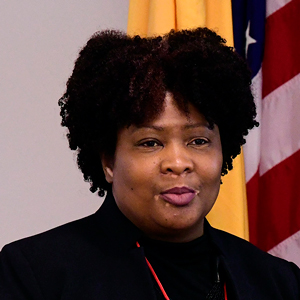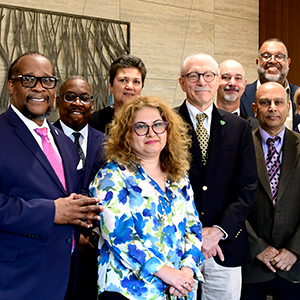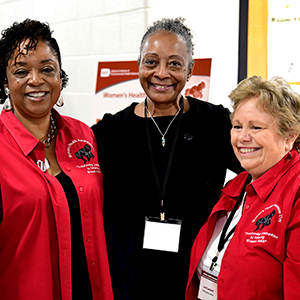
After I launched this column three and a half years ago, one of the first topics I covered was environmental justice. I interviewed NIEHS grantee Robert Bullard, Ph.D., often referred to as “the father of environmental justice,” who defined the term this way:
NIEHS has embraced environmental justice for decades. Through research, outreach, and training, our scientists and staff have led the way in this critical area. In fact, it’s a focus area in our institute’s draft strategic plan for 2025-2029, which is now available for public comment.
That’s why today, I’m excited to share that NIEHS is spearheading new NIH-wide environmental justice initiatives that bring to bear expertise across a variety of disciplines to address health disparities and improve the lives of all people, regardless of their zip code. Trevor Archer, Ph.D., deputy director of NIEHS, has been tasked with leading this important effort. I recently sat down with him to learn more about the initiatives and how they advance environmental justice.
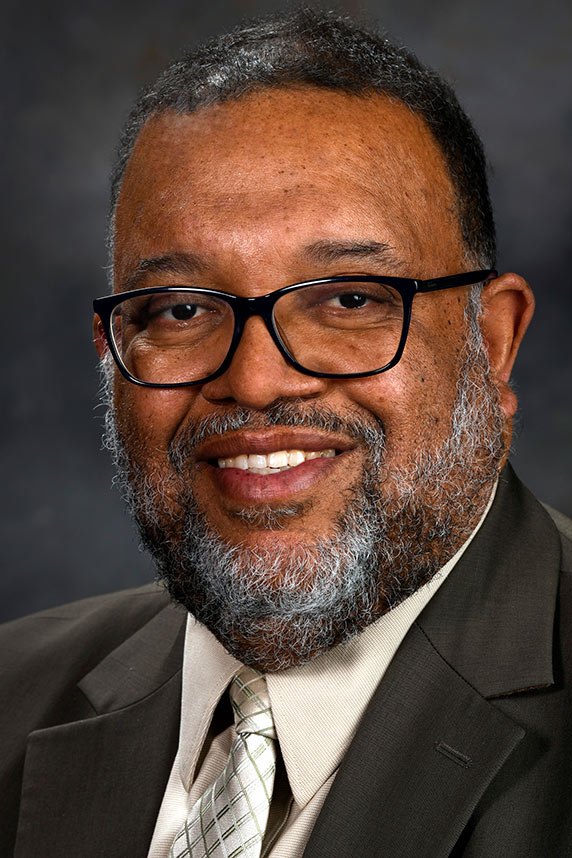
Helping communities experiencing health disparities
Rick Woychik: What does environmental justice mean to you?
Trevor Archer: The question is a good one because I think there is a very strong connection between environmental justice, health disparities, health equity, and racial justice. So, it’s not a matter of choosing one focus area or the other, in my view.
Rather, we can move forward with a cross-cutting approach that allows us to address the concerns of individuals in both urban and rural settings, in communities that have been disproportionately affected by events that occur naturally through the environment and also through man-made disasters or interventions.
Bringing together experts across NIH
RW: What is the impetus for these new NIH-wide environmental justice initiatives that you are helping to lead, and who are the participants?
TA: Xavier Becerra, the U.S. Secretary of Health and Human Services [HHS], requested that all HHS divisions identify three transformative environmental justice actions. In response to that request, leaders at NIH, which is part of HHS, tapped me to lead a new NIH Environmental Justice Working Group. I was selected in part because of my efforts as a committee co-chair of the NIH UNITE Initiative, which put me on the radar of NIH leadership. In that initiative, we aim to strengthen workplace culture and enhance the scientific enterprise by ensuring that we at NIH maximize the skills and knowledge of individuals from a variety of backgrounds. Another reason I was selected is that I am at NIEHS, and as you know, our institute has a strong legacy of environmental justice work that can help to inform the new NIH-wide efforts.
As a first step, I convened a subset of our NIEHS Environmental Health Disparities and Environmental Justice Faculty to help me identify subject matter experts across NIH. The NIH Environmental Justice working group, which was formed last fall, now includes more than 70 individuals from across the 27 NIH institutes and centers. It is exciting that we will bring to bear a diversity of expertise as we advance initiatives that we believe will be highly effective.
Partnering with communities to inform research efforts
RW: That’s excellent. Can you share the nuts and bolts of those initiatives with our readers?
TA: Sure. As I mentioned, there are three major activities we seek to advance. The first is one that I think is going to be really impactful because it builds upon existing Centers of Excellence on Environmental Health Disparities Research, which involve collaboration between NIEHS, the National Institute on Minority Health and Health Disparities, and the Eunice Kennedy Shriver National Institute on Child Health and Human Development.
We want to engage these centers because they have a strong component of community-based participatory research, and we know that participation of affected communities is a key part of advancing environmental justice. Currently, we support three centers, and the aim of the new initiative is to expand that to five centers, increase their funding, and adjust their charter to emphasize environmental justice as a critical part of their mission.
Expanding scientific knowledge through scholars program
RW: Very exciting. What is the second initiative that will be promoted across NIH?
TA: The second item is one that I think will be very transformative for the NIH overall, and it involves development of an Environmental Justice Scholars Program. It is inspired in part by the success of a similar program in the NIH Climate Change and Health Initiative. Our scholars program will bring in outside experts knowledgeable in environmental justice to work with NIH faculty. These experts will help develop programs that frame our work within an environmental justice context. I believe that with the existing strength of our NIEHS Environmental Health Disparities and Environmental Justice Faculty and the demonstrated commitment of more than 12 NIH institutes and centers, we are well positioned for a successful launch of our environmental justice scholars program.
This program will enhance staff and community awareness about environmental justice issues, expand the NIH network of experts in this area, and advance scientific knowledge about how various environmental factors — for example, climate change, air pollution, and social determinants of health — can contribute to health disparities. The program is quite multidisciplinary, as it will bring in scholars with backgrounds ranging from data mapping and disaster response to women’s health research and implementation science. The application cycle for the first cohort of Environmental Justice Scholars will open this summer.
Educating healthcare professionals, policymakers, and others
RW: That’s great to hear, and I look forward to seeing the program take off. I understand that the third initiative builds on something that actually began here at NIEHS. Can you expand on that?
TA: Yes, the third item involves creation of an Environmental Justice Training Program for researchers and community partners. This will build on the NIEHS Worker Training Program [WTP] and its Environmental Career Worker Training Program, both of which are led by Sharon Beard in our institute’s Division of Extramural Research and Training.
Our institute’s efforts to support training for workers across the nation to deal with environmental and man-made disasters — and to serve disadvantaged communities experiencing economic challenges, health disparities, and hazardous environmental conditions — have been truly outstanding. So, it’s great that we can use those programs as a model for our efforts.
The NIH-wide Environmental Justice Training Program will train researchers in how to effectively work with communities to tackle environmental justice issues. Among its other components, the initiative will educate healthcare professionals, public health professionals, and policymakers in environmental justice and how it is linked to health outcomes and well-being. The program will promote environmental justice by enhancing critical research capabilities and fostering strategic partnerships with at-risk communities.
Building on NIEHS success
RW: That's terrific. As you mentioned, in many ways, these NIH-wide initiatives will build on previous NIEHS success in the area of environmental justice.
TA: That’s exactly right. We discussed WTP, but I should also mention the great work of our institute’s Women’s Health Awareness Community Engagement Program, which has an excellent track record of helping women experiencing health disparities understand environmental contributors to disease and connecting them with resources and experts to improve their lives. These are just a couple of examples. Our institute supports a variety of programs and research efforts aimed at advancing environmental justice.
In addition, NIEHS has had success in convening stakeholders to address local environmental justice issues. For example, we recently worked with community groups in Mebane, North Carolina, and surrounding areas who have experienced environmental hazards posed by a nearby abandoned missile plant. We convened an Environmental Justice Action Forum that brought together community groups, NIEHS researchers, officials from the U.S. Environmental Protection Agency, representatives from the White House and HHS, and the U.S. Army. The meeting outlined the problem, identified solutions, and proposed action steps.
As a result, the Army began removing contaminated soil in the area earlier this year. This successful collaboration demonstrates our institute’s ability to bring together stakeholders at all levels to address local environmental justice issues.
Promoting health for all through collaboration, engagement
RW: Any final thoughts for Environmental Factor readers?
TA: Environmental justice issues affect a variety of populations across our country, and I think our initiatives are poised to tackle many of these challenges in the years ahead. Whether we are talking about dangerous environmental exposures faced by tribal communities living near abandoned uranium mines or coastal communities impacted by a changing climate, the skills and expertise our initiatives bring to the table will deliver tangible results that improve lives.
At NIEHS, our new strategic plan includes a specific focus on environmental justice and health disparities, allowing us to build on our rich history in these areas. By continuing to lead and collaborate with others across NIH, we can drive meaningful change and promote health for all.
Last but not least, I would like to give a major shoutout to the NIEHS Environmental Health Disparities and Environmental Justice Faculty that I mentioned earlier. The faculty is a group of scientists and staff dedicated to promoting environmental justice through research and community engagement. Since being tapped to lead the NIH-wide Environmental Justice Working Group, I have frequently sought their advice, and among other contributions, they have helped to identify expertise across NIH that can be brought to bear on the environmental justice initiatives we have discussed today.
Established in 2020, this group includes members from various research divisions within NIEHS. The co-leads are Sharon Beard, who directs WTP; Dr. Windy Boyd, senior science editor for the journal Environmental Health Perspectives; Dr. Darlene Dixon, acting chief of the NIEHS Mechanistic Toxicology Branch; Dr. Stephanie London, head of the institute’s Integrative Genomic Epidemiology Group; Liam O’Fallon, health specialist in the NIEHS Population Health Branch; Joan Packenham, Ph.D., director of the institute’s Office of Human Research and Community Engagement; and Dr. Carmen Williams, deputy chief of the NIEHS Reproductive and Developmental Biology Laboratory.
(Rick Woychik, Ph.D., directs NIEHS and the National Toxicology Program.)





